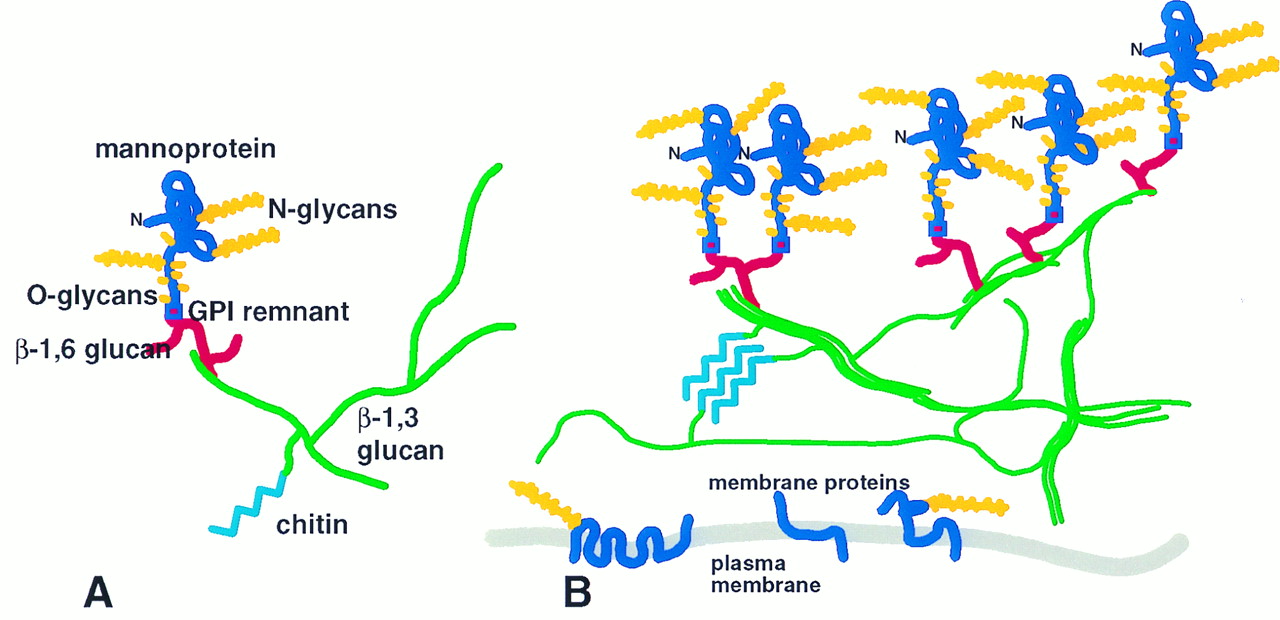As a leading service provider in the field of biological research and drug discovery, Creative Biolabs is fully competent and dedicated to providing antifungal drug discovery services. With the comprehensive advanced drug discovery platform, Creative Biolabs provides our clients with antifungal drug discovery package services including target identification and validation, Hit identification, Hit to lead, Lead optimization, and IND enabling to meet the novel drug discovery goals. Here we describe the attractive antifungal targets involved in the mannoprotein biosynthesis.
Introduction of Mannoprotein
The outer layer of fungal cell wall accounts for about one-third of the cell wall dry weight. It mainly consists of heavily glycosylated mannoproteins emanating from the cell surface and is involved in other processes in cell-cell recognition events, cell surface accessibility restriction, and protection against desiccation. The peptide fraction represents 30% of the mannoprotein structure and 98% of the glycosyl residues are mannose. The branched glucans can then be cross-linked together and to chitin and mannoproteins to provide the cell wall with mechanical strength and integrity.
Hence, inhibition of mannoprotein biosynthesis can disrupt the integrity of the cell wall, suppress the growth and survival of fungi. Thus, inhibition of mannoprotein biosynthesis can be used as an effective strategy against fungi. Some key enzymes or other substances involved mannoprotein biosynthesis act as the targets for the development of anti-fungal drugs. For example, the various mannosyltransferases and other glycosyltransferases used in the Golgi apparatus for the synthesis of N-linked and O-linked oligosaccharides and mannose attaching to cell wall glycoproteins are the targets for the development of anti-fungal drugs.
 Fig.1 Relationships among components of S. cerevisiae cell walls. (Lipke, 1998)
Fig.1 Relationships among components of S. cerevisiae cell walls. (Lipke, 1998)
Advantages of Mannoprotein Biosynthesis as Therapeutic Targets
The fungal cell wall is a dynamic structure that exerts an essential role in protecting the cell from changes in osmotic pressure and other environmental stresses while allowing the fungal cell to interact with its environment. The structure and biosynthesis of a fungal cell wall is the unique feature that distinguishes from mammals. Therefore, it can be considered as an excellent target for the development of antifungal drugs. The advantages of antifungals targeting mannoprotein biosynthesis are as following.
-
Specific-component of fungal cell wall
-
Without or no effect on mammalian cell
-
Rapid and accurate fungistasis effect
-
Broad-spectrum fungistasis effect targeting a variety of fungi.
Based on an outstanding professional team and diverse advanced technology platforms, Creative Biolabs is devoted to helping global clients to explore and identify the potential and well-recognized targets for antifungal drug development. If you are interested in our drug target discovery, please contact us for more details or a detailed quote.
Reference
-
Lipke, P.N.; Ovalle R. Cell wall architecture in yeast: new structure and new challenges. Journal of Bacteriology. 1998, 180(15):3735-3740.
For Research Use Only.


 Fig.1 Relationships among components of S. cerevisiae cell walls. (Lipke, 1998)
Fig.1 Relationships among components of S. cerevisiae cell walls. (Lipke, 1998)


